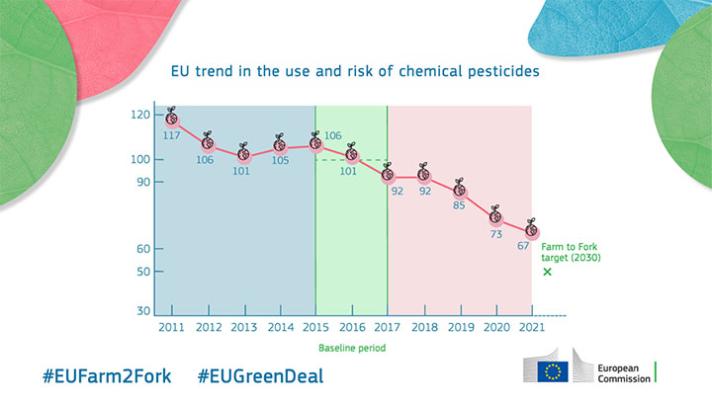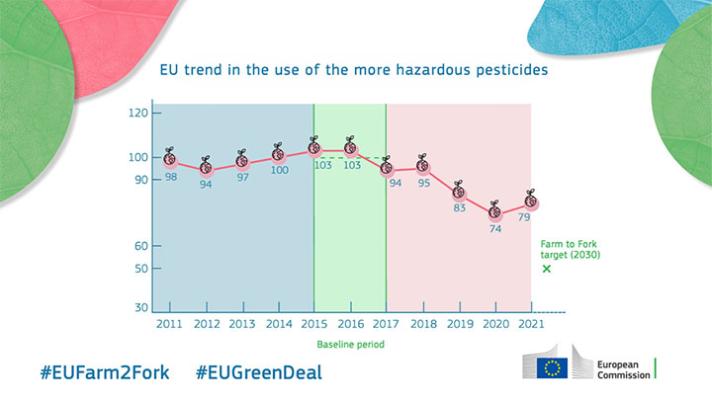On 5 July 2023, the Commission published updated progress towards Farm to Fork pesticide reduction targets for the period 2011-2021.
EU trends in the use and risk of chemical pesticides
| 2011 | 2012 | 2013 | 2014 | 2015 | 2016 | 2017 | 2018 | 2019 | 2020 | 2021 | |
|---|---|---|---|---|---|---|---|---|---|---|---|
| EU | 117 | 106 | 101 | 105 | 106 | 101 | 92 | 92 | 85 | 73 | 67 |
EU trends in the use of more hazardous pesticides
| 2011 | 2012 | 2013 | 2014 | 2015 | 2016 | 2017 | 2018 | 2019 | 2020 | 2021 | |
|---|---|---|---|---|---|---|---|---|---|---|---|
| EU | 98 | 94 | 97 | 100 | 103 | 103 | 94 | 95 | 83 | 74 | 79 |
The use and risk of chemical pesticides shows a decrease of 6%* from 2020. And an overall decrease - in the first four years - of 33% from the baseline period of 2015-2017.
The use of more hazardous pesticides shows an increase of 5% from 2020. And an overall decrease - in the first 4 years - of 21% from the baseline period of 2015-2017.
The overall downward trends, in the first 4 years, shows that both Farm to Fork targets can be achieved by 2030.
Member States are encouraged to keep ensuring that chemical pesticides are only used as a last resort, in non-agricultural settings as well as on farms. as foreseen under the Farm to Fork strategy. By consistently applying the principles of integrated pest management (IPM), farmers can reduce their reliance on chemical pesticides without jeopardising the profitability of their enterprises.
* Based on the Farm to Fork pesticide reduction 2021 calculations and baselines.


